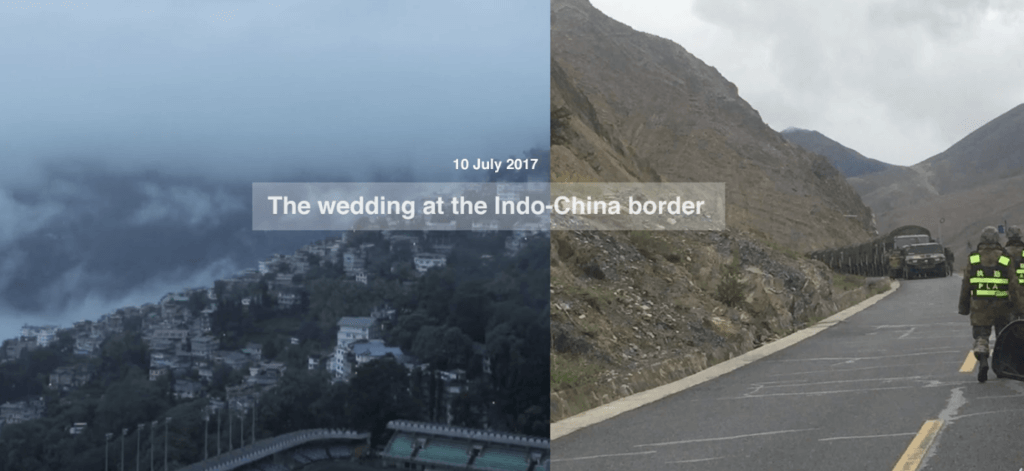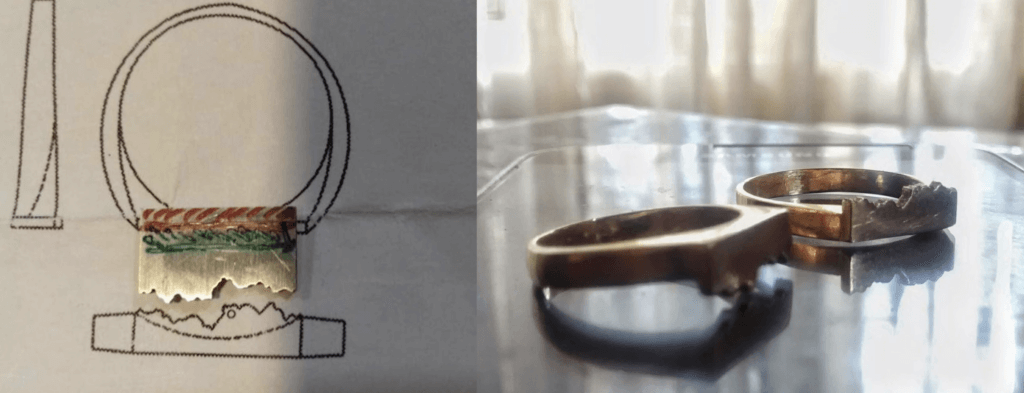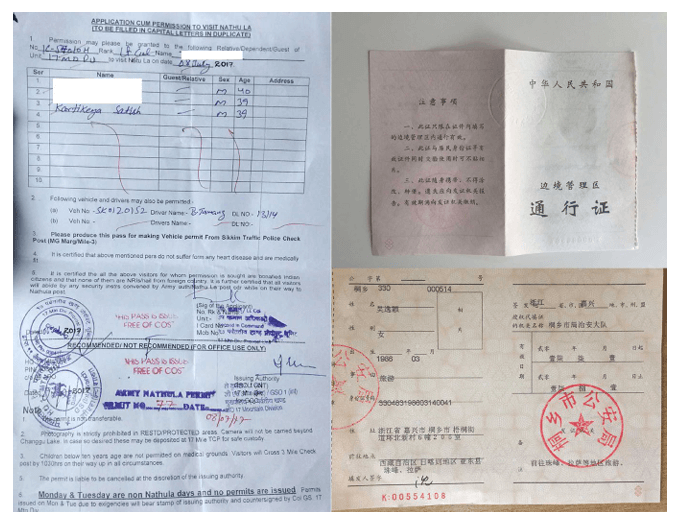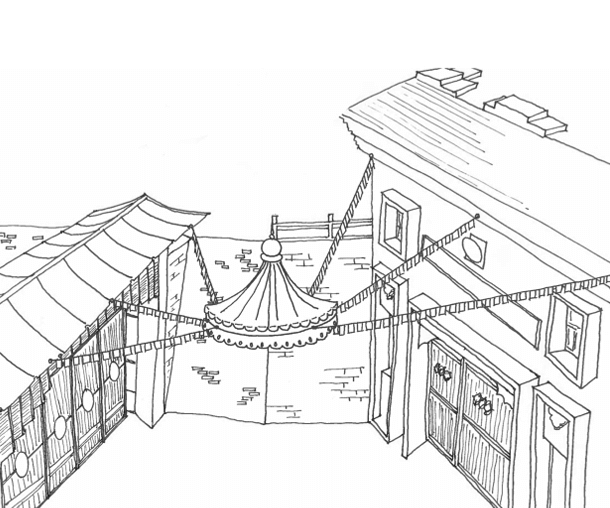- Design of relation making events as a genre for Research-through-design
- Placemaking in politically contested international borders
- Place based performance with personal relation making event design
- Access related publication from the Design Research Society conference: Here

The walls of our home have heard many discussions of visas, permits and such bureaucratic procedures that have become part of our daily lives. As citizens from India and China we are political neighbours, while we cohabit as a married couple in different countries, like Finland, Denmark and now in Australia.
The distance from our countries of birth and its subsequent citizenry made us ponder on the political boundary between our neighbouring nations. While between India and China, our rituals, practices, food habits and languages vary, the two nations share a long political border that also separates along the Himalayas. This boundary as a political border is many places, practices and procedures.
As field-based design practitioners, we conceptualized a relational and performative project with the political border of our respective nations. The aim was to highlight the experience of a political border for two cross-border citizens wishing to establish a personal relationship. For this we began by imagining and framing the bureaucratic processes and procedures from both countries of India and China to reach the border, as our wedding rituals, for weaving in a union at a border pass called Nathula.
Historically, Nathula pass, between India and China has been a place of constantly evolving characteristics. Starting as a trade pass for the original silk route, then as a military pass, as a conduit for Tibetan refugees to move into India, as a sealed border after the Indo-China war in 1962, then reopening in 2006 as a trade pass again and finally becoming a point on a pilgrim route in 2015. The pass thus has been constantly transforming, gaining commercial, political, military and religious touristic characteristics. With our proposal for holding our wedding ceremony at Nathula, we wished to push the evolutionary characteristic of Nathula further, and induce a personal poetic signification of union onto the border by two ordinary citizens across the border.
Thus we decided to inquire into new possibilities for the Indo-China border as a political boundary by considering the political and bureaucratic border control processes as wedding rituals at the border for a symbolic union of two individuals. While we acknowledged the procedures of structural division on the border site, we reframed them for a ritual of a personal alliance. On the one hand, the project wished to highlight the political processes and protocols necessary for individuals from India and China to reach the boundary to form a relation, on the other, we wished to subvert the procedures of structural division into new meanings of a personal alliance.

The design of the wedding rings based on the profile of Nathula Pass
With this we agreed that our wedding rituals would be both supported and constrained by a political border context. So, we began attributing agency to this context from the inception of the project. By staining a personal wedding of two cross-border citizens as an event of union event along a political border that divides and separates, the project through a personal relation-based design practice wished to seed a subversive coupling onto the Indo-China border. The short film and the Design Research Society article both capture the dynamically changing circumstances of the project while the article articulates the design practice output from the project in further detail.

The permits issued by border authorities from India and China enroute to Nathula Pass

Speculating the space between the Indo-China border gates at Nathula as a wedding venue
Project Lead and Concept Development: Karthikeya Acharya and Wu Yiying
Role: Grant Writing, Product Design, Performing as the Groom, Film Producer on the Indian side.
Project Funding: Kone Foundation, 2017
Project Location: Nathu La Pass, Indo-China Border, Sikkim and Tibetan region
Project Collaborators: Sunil Pillai (Camera and Film editing), Ulla Varis (Song lyrics and production), Hugo (Camera work in China) and the Indo-China community at the border.
Short film Premiere: ARSi film festival: AFF 2019, Tallinn, Estonia
Related Publication: Acharya, K., and Wu, Y. (2020) “Where is your other half?”: A Wedding shaped by the Profile, Politics and Potential of the Indo-China Border, in Boess, S., Cheung, M. and Cain, R. (eds.), Synergy – DRS International Conference 2020, 11-14 August, Held online. https://doi.org/10.21606/drs.2020.220